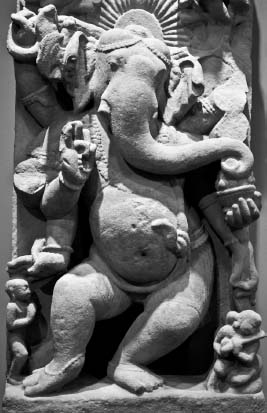HinduismSigns and Symbols |
Have relics ever been part of Hindu practice? |
Concern over the sacred remnants of human embodiments of holiness—often called relics—does not play as important a role in Hindu tradition as in, say, Christianity or Buddhism. One reason is that Hindu myth describes the whole Earth as sacred. All of creation is itself the body of God. With that kind of pervasive sense of holiness, reminders of the holiness of individual human beings are hardly necessary. Even so, Hindu popular devotional practice displays an ample array of concrete symbols that function much the way relics do in other traditions. One fine example is the use of sacred footprints called padukas. Footprints of Vishnu often appear in paintings, small items of jewelry, and metal stamps with which devotees can apply inked impressions of the deity’s two feet. Especially sacred are the feet and sandals of one’s guru. Devotees sometimes gather to collect the water and other materials used to bathe either the holy one’s feet, or, in his absence, an image of his feet called the shri paduka. Devotees often convey the padukas of famous saints on wagons in procession as they sing of their desire to be at sacred feet of the holy one.

Ganesha, the half-elephant god, is the son of Parvati and Shiva.
